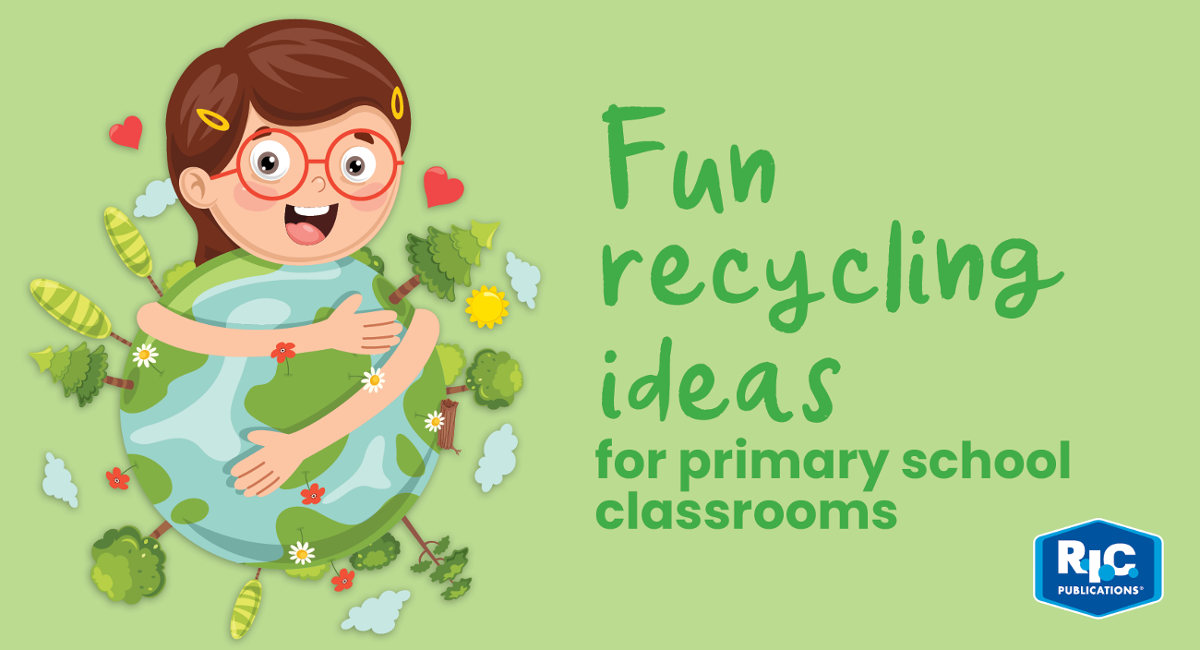- Wednesday 10 April 2019
- 0 Comments
It’s never too early to teach children about recycling! From learning about the environmental benefits, to seeing how everyday waste products can be repurposed, recycling is a fun, rewarding and thought-provoking practice.
Here are three simple ideas to get you started:
Sustainable use and repurposing your paper
Printing on both sides of the paper may seem like such a small thing, but its environmental impact is massive.
Check out the following statistics, obtained from the WWF Website:
- It takes an average of 5 litres of water to produce one piece of A4 paper.
- 93% of paper comes from trees.
- Paper accounts for 25% of landfill waste and 33% of municipal waste.
- Every tree produces enough oxygen for three people to breathe.
By printing on both sides of an A4 sheet we are not only reducing our consumption, but we can also repurpose any left over scrap materials into Environmentally-friendly Christmas crafts.
Check out this short video by Domtar on The paper-recycling process.
Implement a multi-colour recycling bin system
- Download the free 'How To Set Up A Recycling System: A School's Guide' resource pack from Planet Ark here.
'A recycling system involves collecting recyclable materials at school and taking them to (or getting them collected by) a recycler. Remember though, it is always better to reduce waste first, reuse where possible, and then recycle.'
But why is recycling so important? Here are just some of the benefits, obtained from the Planet Ark website.
- It reduces the amount of waste going into a landfill, helping to prolong its useful life.
- It saves energy and thus greenhouse gas emissions.
- It creates jobs.
- It saves natural resources such as oil and water.
- It reduces pollution.
- It provides raw materials for industry.
- It makes a difference!
Download 'A matter of change' from our Year 3 Science: A STEM approach series and try these activities with your students.
 |
 |
 |
 |
 |
Watch this short video from Media Operations Centre with your students.
Join the 'Nude food' movement by visiting the website here.
'Nude Food is food without excess packaging. This reduces the amount of 'stuff' that needs to go in bins to be sent to landfill. Durable, reusable containers are a great way to bring food, as they may last from pre-school through to high school and beyond, providing long term cost savings and environmental benefits.'
Download this free Nude food steps for schools guide with 7 steps for having a 'Nude food' day.
- Work out the scale of your waste-free lunch
- Assess the recycling systems at your school/in your class
- Conduct an audit before starting your nude food days
- Communicate your nude food plans, objectives, details etc. with your students and colleagues
- Communicate your nude food plans, objectives, details etc. with your parents and guardians
- Hold the nude food days
- Reinforce change
Watch this short video by Lara Shannon on how to reduce packaging waste in the classroom.
Being in the print industry, R.I.C. Publications is passionate about decreasing our carbon footprint. You can read more about our environmental initiatives here.
We also have a suite of resources based around the environment, recycling and sustainability.
In April we are celebrating all things environmental! You can download our free teaching resource pack here or by clicking on the image below.
We'd love to hear about your classroom recycling hacks in the comments below!

